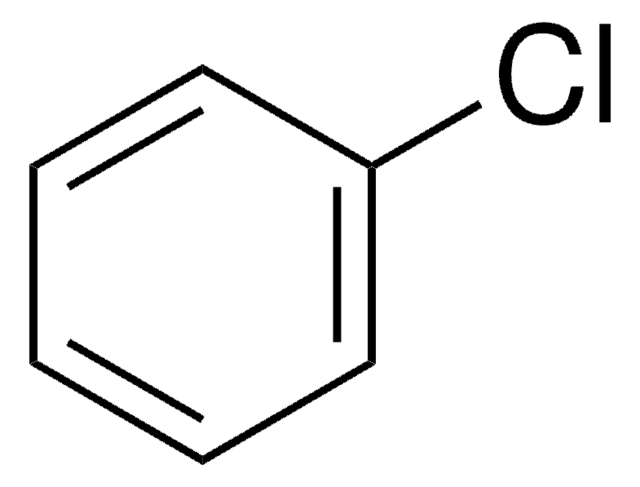372145
Trichloroethylene
anhydrous, contains 40 ppm diisopropylamine as stabilizer, ≥99%
Synonym(s):
TCE, Trichloroethene
About This Item
Recommended Products
grade
anhydrous
Quality Level
vapor density
4.5 (vs air)
vapor pressure
61 mmHg ( 20 °C)
Assay
≥99%
form
liquid
autoignition temp.
770 °F
contains
40 ppm diisopropylamine as stabilizer
impurities
<0.002% water
<0.005% water (100 mL pkg)
evapn. residue
<0.0005%
refractive index
n20/D 1.476 (lit.)
bp
86.7 °C (lit.)
mp
−84.8 °C (lit.)
density
1.463 g/mL at 25 °C (lit.)
SMILES string
Cl\C=C(\Cl)Cl
InChI
1S/C2HCl3/c3-1-2(4)5/h1H
InChI key
XSTXAVWGXDQKEL-UHFFFAOYSA-N
Looking for similar products? Visit Product Comparison Guide
General description
Many methods have been proposed for the mineralization of TCE.
Signal Word
Danger
Hazard Statements
Precautionary Statements
Hazard Classifications
Aquatic Chronic 3 - Carc. 1B - Eye Irrit. 2 - Muta. 2 - Skin Irrit. 2 - Skin Sens. 1 - STOT SE 3
Target Organs
Central nervous system
Storage Class Code
6.1D - Non-combustible acute toxic Cat.3 / toxic hazardous materials or hazardous materials causing chronic effects
WGK
WGK 3
Flash Point(F)
closed cup - does not flash
Flash Point(C)
closed cup - does not flash
Personal Protective Equipment
Regulatory Listings
Regulatory Listings are mainly provided for chemical products. Only limited information can be provided here for non-chemical products. No entry means none of the components are listed. It is the user’s obligation to ensure the safe and legal use of the product.
EU REACH SVHC Candidate List
EU REACH Annex XVII (Restriction List)
EU REACH Annex XIV (Authorisation List)
Choose from one of the most recent versions:
Already Own This Product?
Find documentation for the products that you have recently purchased in the Document Library.
Customers Also Viewed
Our team of scientists has experience in all areas of research including Life Science, Material Science, Chemical Synthesis, Chromatography, Analytical and many others.
Contact Technical Service









